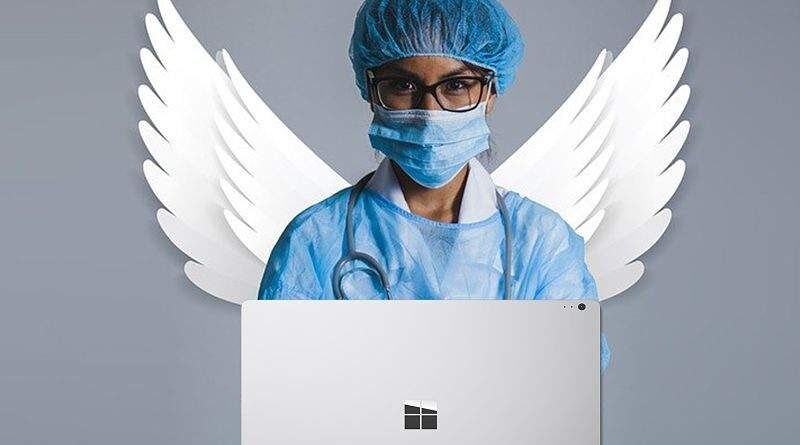A “Black Swan Event” gives telehealth its wings
By Kim Swafford, MHA, Healthcare Industry Advocate, Worldwide Commercial, Microsoft

First, some may ask, what is a “black swan event?” It’s a metaphor based on an ancient saying “a rare bird in the lands and very much like a black swan” which was used to convey something so rare it couldn’t possibly exist. After later discovering there were, in fact, black swans living in the wild, the “black swan metaphor” emerged to show a shift in assumptions. It describes an event that comes as a surprise, has a major effect, and is often inappropriately justified after the fact with the benefit of hindsight. Many individuals state the world-wide impact of COVID-19 is our “black swan event.”
April 2019, I don’t think any of us would have imagined we would be living through a pandemic in 2020. Our lives have all changed. Most of us in the US can only leave the house for essential activities. We are required practice social distancing and have leveraged technology to stay connected. For instance, in the past 5 weeks or so, how many of us have set up virtual “family reunions” or “happy hours” with friends? The impact of COVID-19 is giving us an opportunity to look at how we connect virtually, not just socially, but in all aspects of our lives.
Obviously, one of the greatest impacted areas of this pandemic is how healthcare is delivered. With increased demand of emergency and intensive care services, elective procedures and most clinic visits have been cancelled or postponed. Health systems leaders have had to rethink their structure beyond the typical bricks and mortar system. Key components to this structure have an emphasis on reducing the bottleneck at the hospital and containing unnecessary contamination, this may include employing new technologies, such as patient triage via chatbots and telehealth (both synchronous and asynchronous) to reduce physical contact.
We need to discover innovative ways to use data and AI to develop a telehealth model that can deliver digital care more efficiently and thus reach more people.
Recently, I have heard some government leaders state telehealth is new. It is not. It’s been around in some shape or form for over 80 years since the telephone was first used. In the 1960’s telehealth further impacted health care by using closed circuit television at the University of Nebraska in the Department of Psychiatry. This is one of the first programs that began integrating telehealth into clinical care.
The 1990’s brought the internet boom and took telehealth to the next level by providing easier connection points, however; regulatory and technology challenges continued to remain barriers.
Novel programs such as telestroke and teleICU were introduced in the early 2000s, proved significant value and became mainstays in hospitals, particularly in rural communities. Slowly, reimbursement and licensing models evolved, but not enough to drastically change care delivery. Each year there have been incremental additions such as credentialing by proxy, multi-state medical licensure, and reimbursement for services such as remote patient monitoring, but it still didn’t lead to demand. There are multiple factors impacting demand, from the patient’s perception that telehealth would not be as effective as an in-person visit, to the technology being too cumbersome for clinicians adopt and use (for both the provider and the patient).
With the onset of COVID-19, it quickly became apparent the healthcare industry cannot continue status quo. In just a month, the federal government stepped in with new telehealth reimbursement and licensing models from CMS and some commercial payors have followed suit. These reimbursement shifts, along with the necessity of social distancing, literally opened the flood gates for the adoption for telehealth services.
Although, it is encouraging to see the significant increase in telehealth demand, the traditional telehealth capacity and delivery models cannot meet that demand. Many telehealth companies are doing their best to keep pace; however, we need to challenge ourselves to not try to recreate in-person clinic visits. We need to discover innovative ways to use data and AI to develop a telehealth model that can deliver digital care more efficiently and thus reach more people. Providers should be working at the top-of-license, based on their specialty, and leveraging technology to optimize their time and expertise.
Leveraging AI can assist providers to work top-of-license by possibly recommending a differential diagnosis before a patient is seen during the virtual visit. Additionally, using data will provide physicians to have a greater reach to more patients. Data is already tracked via smart watches, scales, but there needs to be a greater push for peripheral equipment to keep patients in their homes to keep care outside of the clinic when appropriate. Several companies are quickly developing solutions in this space to address this need of automated patient assessment, not just for COVID-19 patients, but beyond.
We can already see the way we go about our days will change, to what extent is still unknown. A new normal will be established. In healthcare, we do not have many opportunities where the external variables align to reveal our “black swan”, which fundamentally shifts thinking. This is our opportunity to change mindsets to support the emerging demands within the new wave of telehealth. What impact will you bring to this new model of care?



